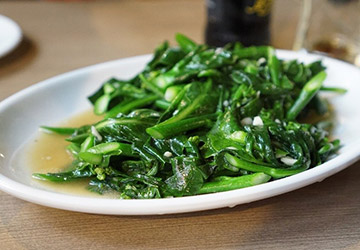Throughout the Twin Cities, people are enjoying farmers markets. And what’s not to love? They bring farmers and residents together and provide fresh fruits and veggies to their communities.
In the Twin Cities, we have more than 70 farmers markets that offer a wide range of food, crafts and family fun. They support local economies, promote community engagement and help social interactions between customers, vendors and neighbors. And, of course, they provide access to fresh, healthy food.
As a board member and volunteer of the Neighborhood Roots Farmers Markets, I’m fortunate to see this positive impact all the time. When people shop at a farmers market, they are more likely to purchase fruits and vegetables they haven’t tried before. Then, they become exposed to and familiar with more fresh produce options. And I know as a doctor that this has the potential to boost the health of our entire community.
Farmers markets offer local selections
Most vendors at farmers markets are local producers. That means they grow or make what they sell. And because there are so many different vendors, you never know what you might find.
Adding to the variety is the fact that fruits and vegetables come up all season long, so items change every week. In July, you’ll see things like potatoes, green beans, beets, carrots and leafy greens. You could also find fruit like raspberries or blueberries. August will bring all new options like tomatoes, peppers and eggplants. Toward the end of season is when you can get apples and melons.
Alongside the fresh produce there are homemade goods from other local vendors. Salsa, jams, pickled goods and sauces are all available. And vendors are typically eager to share their recipes. Check out my favorite, which is a delicious way to use bok choy.
Farmers markets are great for kids and families
Farmers markets are a place where children can be exposed to new foods and new tastes. Vegetables are often displayed at kid height, and this empowers them to pick out their own potatoes, or pick between different colors of beets. There’s a good chance they could see vegetables they’ve never seen before. And oftentimes there’s a chance to taste items, too. On one day there might be samples of raw kohlrabi. On another, there could be different colored carrots or melons, or varieties of apples to try. Farmers markets give kids the chance to talk to growers about what these different kinds of produce taste like, and to learn about how they’re grown. We frequently hear parents say that it’s easier to get their kid to try new things in this environment than it is at home.
Farmers markets are beneficial to not only farmers, but to the entire community
Health happens in the community, not just in a clinic. I like to think of farmers markets as modern-day town-squares. The food trucks, live music and opportunities to mingle with local producers, friends and neighbors all contribute to them being key drivers of physical, social and community health. Connecting in this way is a well-documented technique in combating depression, improving mental health and fostering an overall sense of well-being that just doesn’t occur when shopping at the local store. And it’s why I’m proud HealthPartners recognizes the importance of supporting these neighborhood assets and building connections in the community.
Living an ongoing healthy lifestyle isn’t always easy. Sometimes the convenience of a fast food restaurant is hard to resist. But making a habit of buying fresh ingredients can eventually become second nature. And farmers markets make doing that even more enjoyable. Not only do they offer fresh produce, but they give us a chance to get out of the house and engage with people in our community. And just getting outdoors has proven to be very valuable to our mental health.
Try this recipe from Neighborhood Roots.
Sauteed Bok Choy
Serves 4

Ingredients:
- 2 tablespoons neutral cooking oil, like canola
- 1 garlic clove, peeled and minced (or to taste)
- 1 inch piece ginger root, peeled and minced
- ¼ teaspoon red-pepper flakes, or to taste
- 4 bunches of baby bok choy, approximately 1½ pounds, cleaned, with the ends trimmed
- 1 tablespoon soy sauce
- 1 tablespoon chicken stock or water
- Toasted sesame oil for drizzling
Instructions:
In a large sauté pan with a lid, heat oil over medium-high heat until it starts to shimmer. Add garlic, ginger and red-pepper flakes and cook, stirring constantly, until fragrant, about 45 seconds.
Add bok choy and stir carefully to cover with oil, then cook for approximately 2 minutes. Add soy sauce, stock or water, then cover pan and cook for approximately 2 minutes more, until steam begins to escape from beneath the lid of the pan.
Uncover and continue to cook until liquid is close to evaporated and stalks are soft to the touch, approximately 3 minutes more.
Remove to a warmed platter and drizzle with sesame oil.